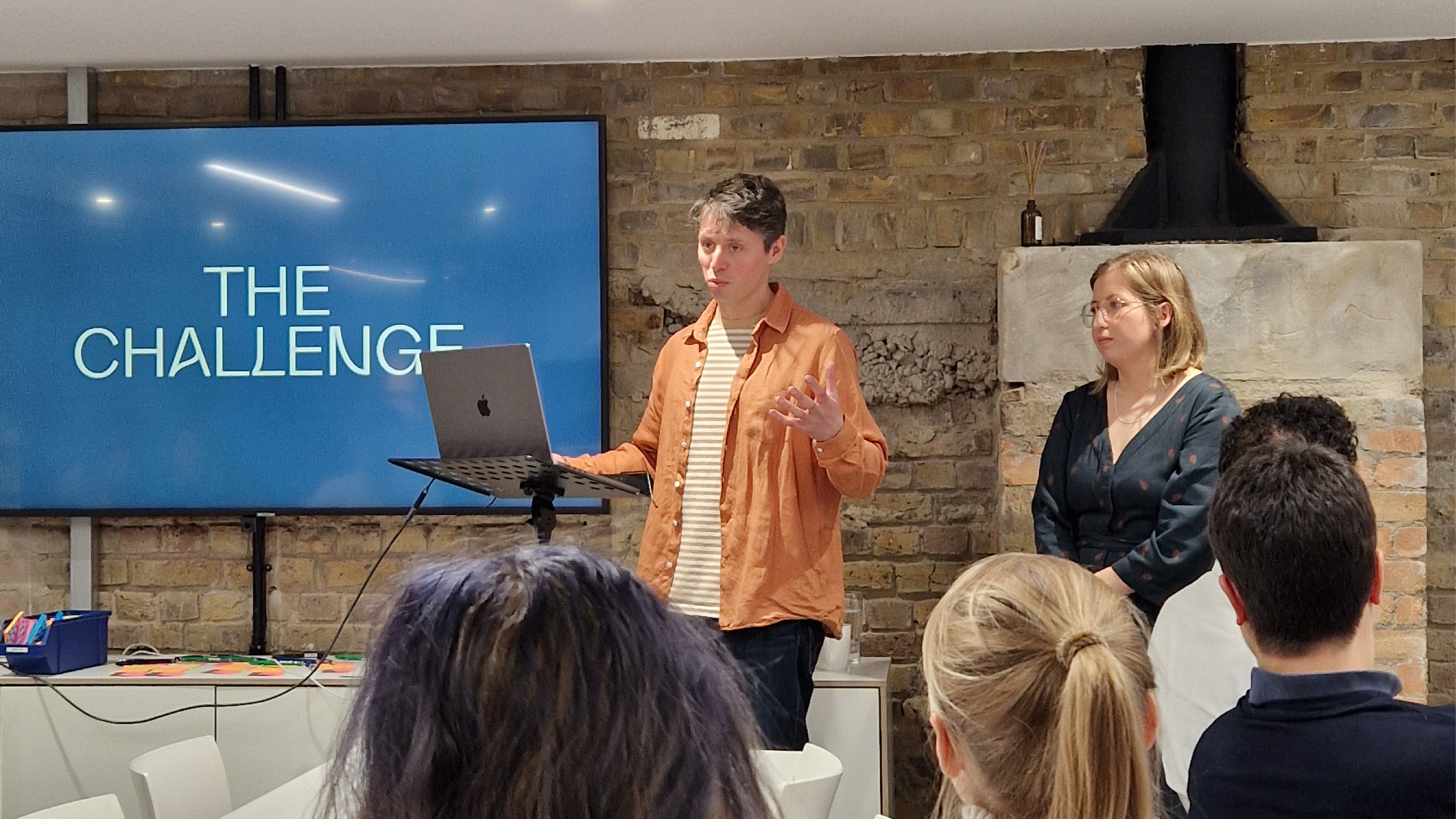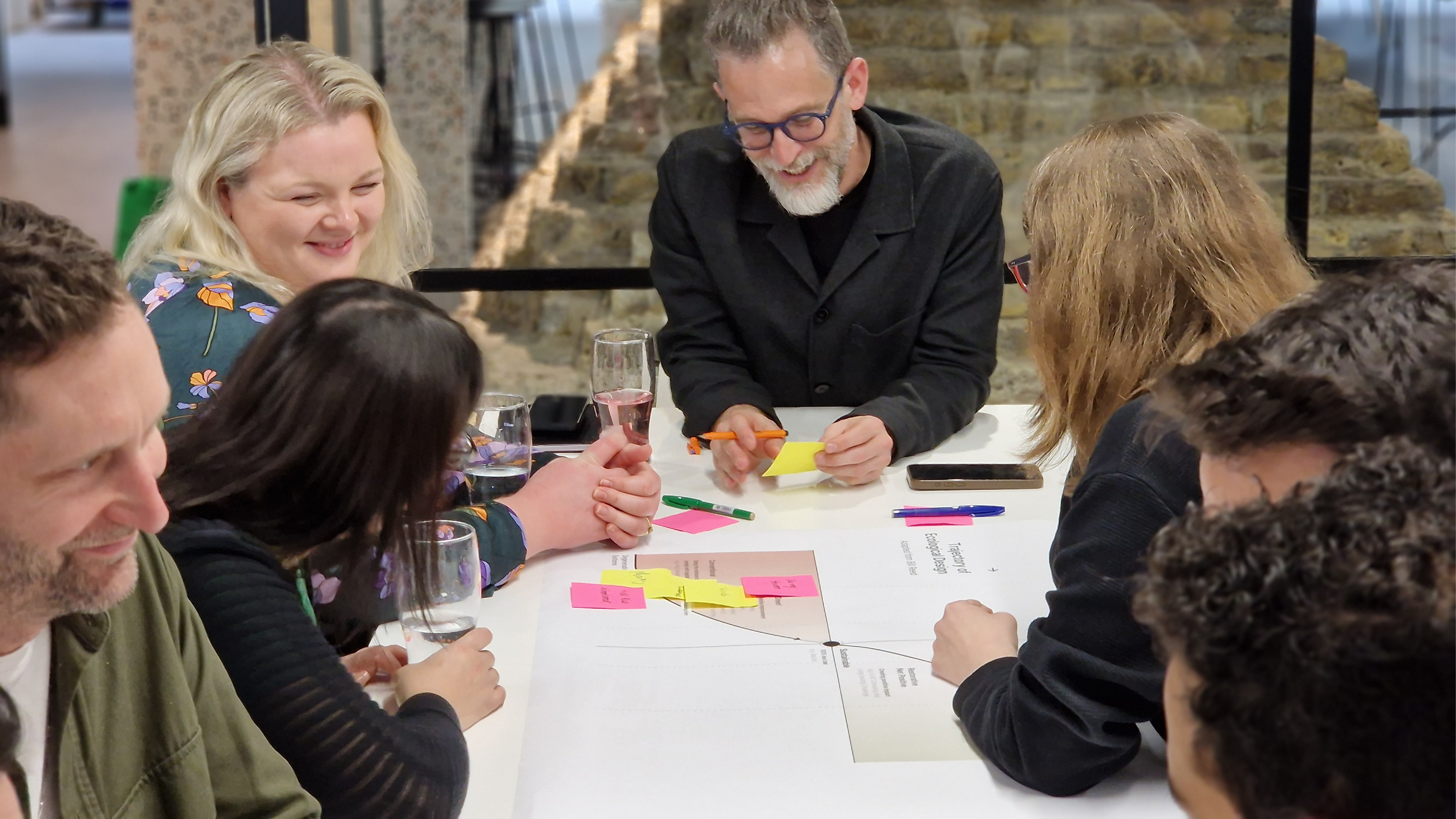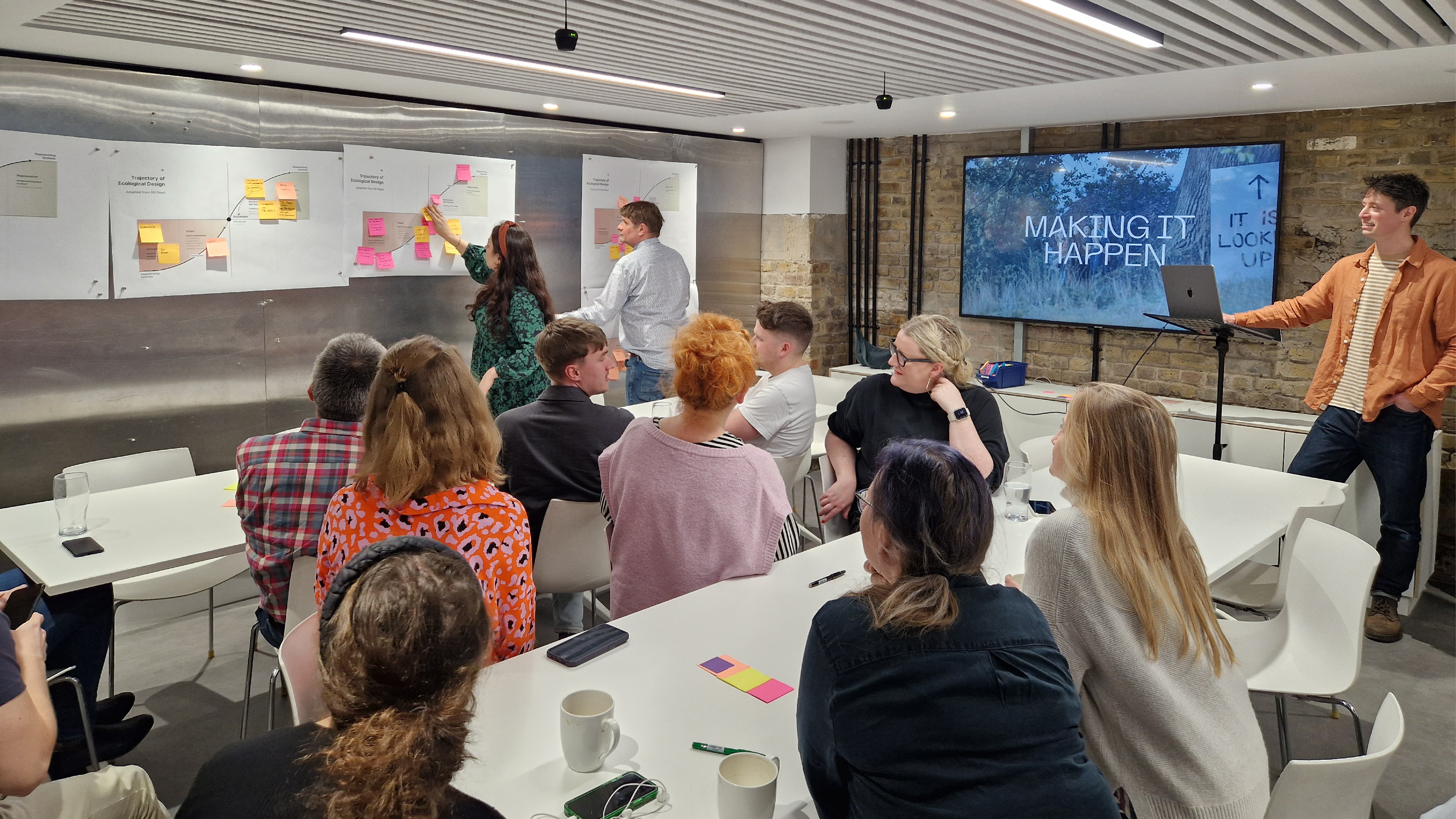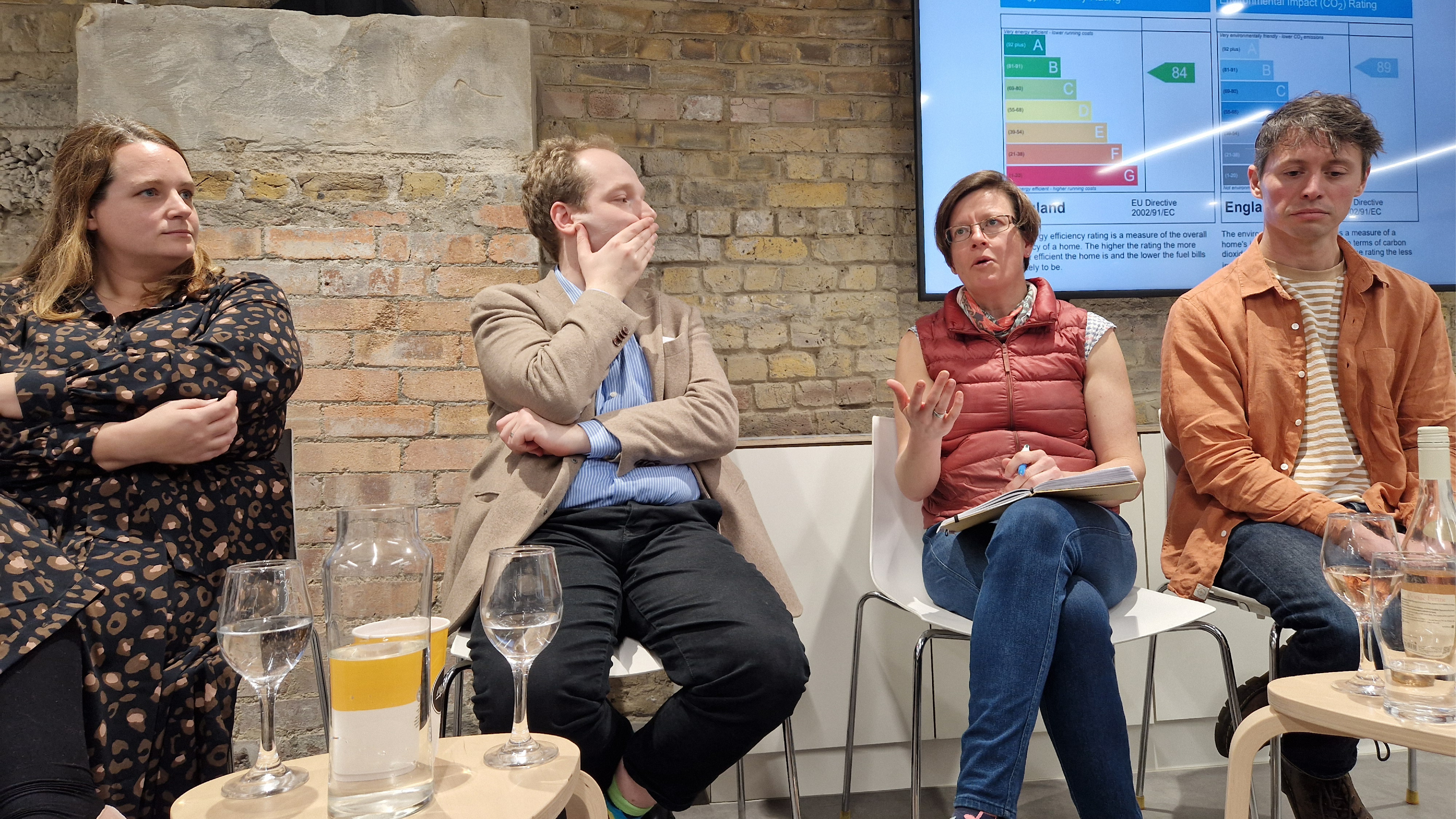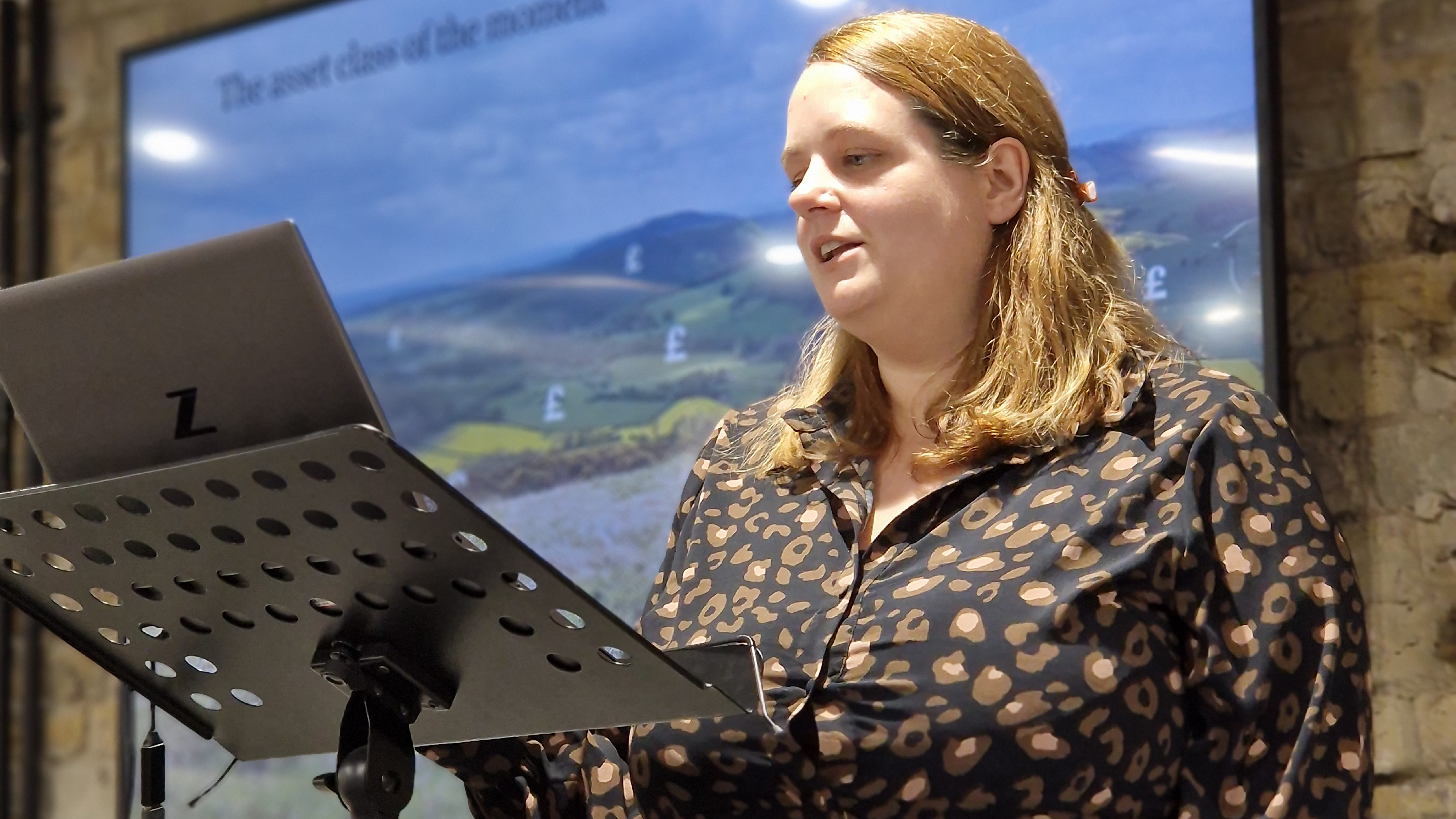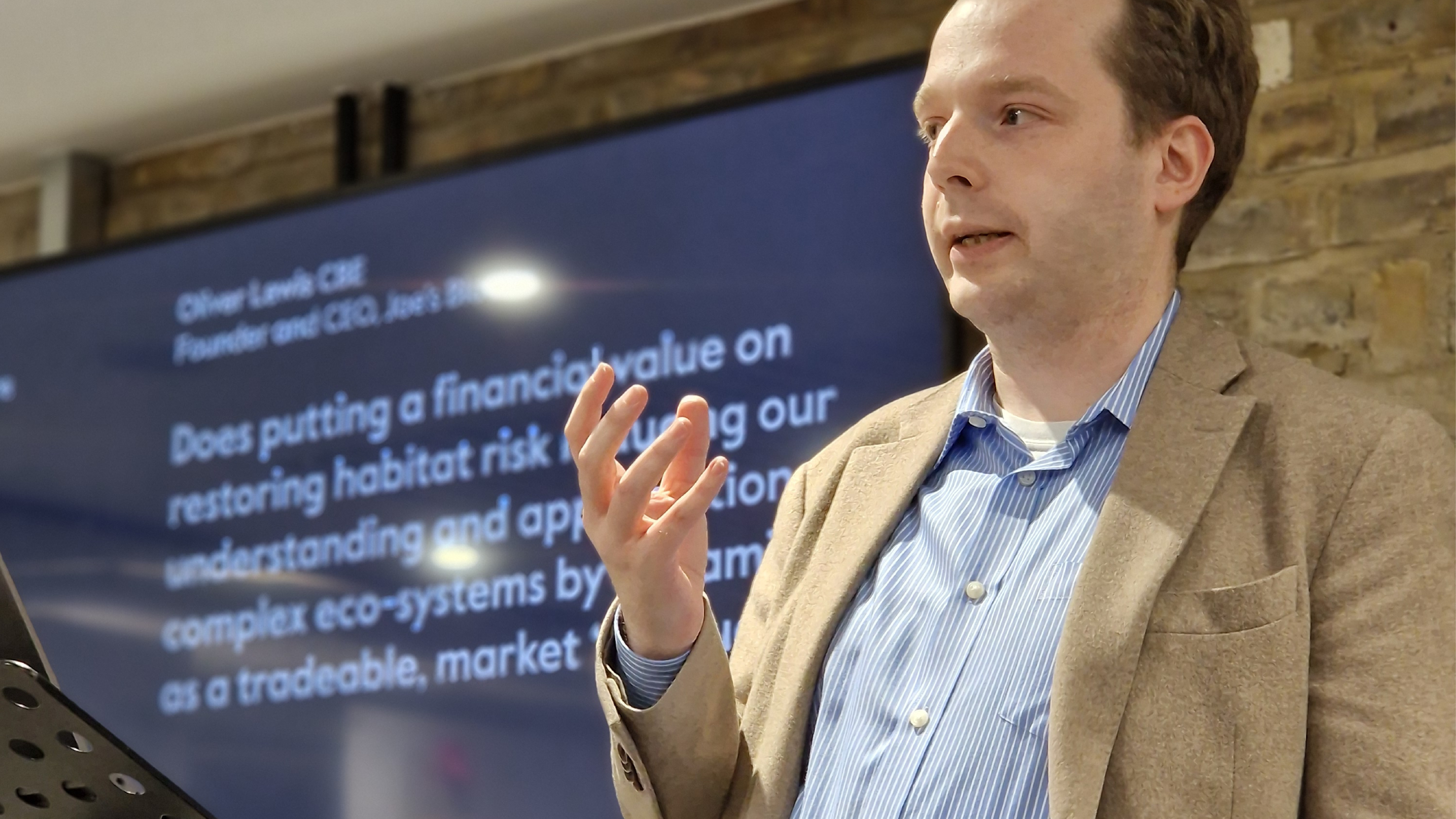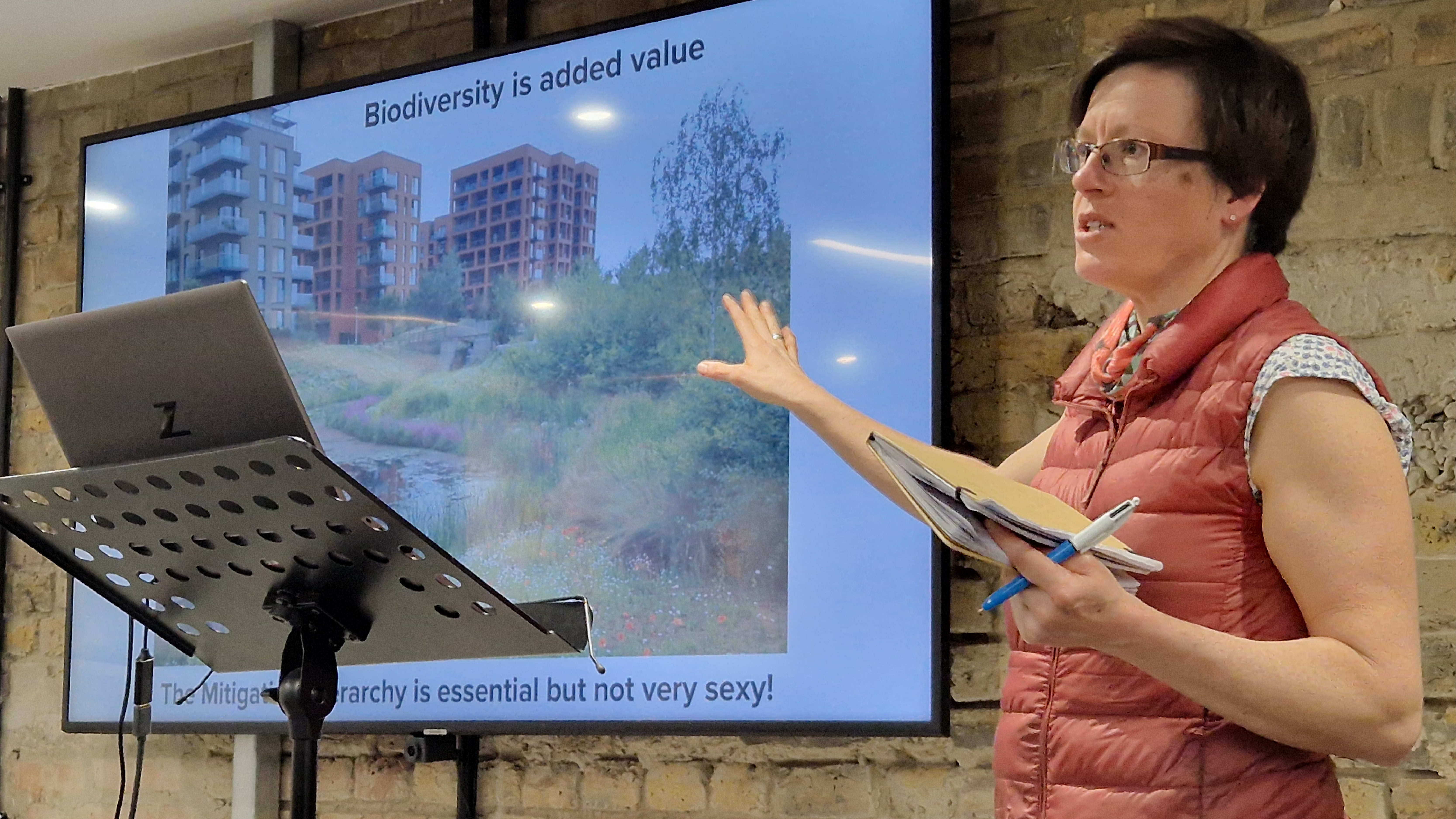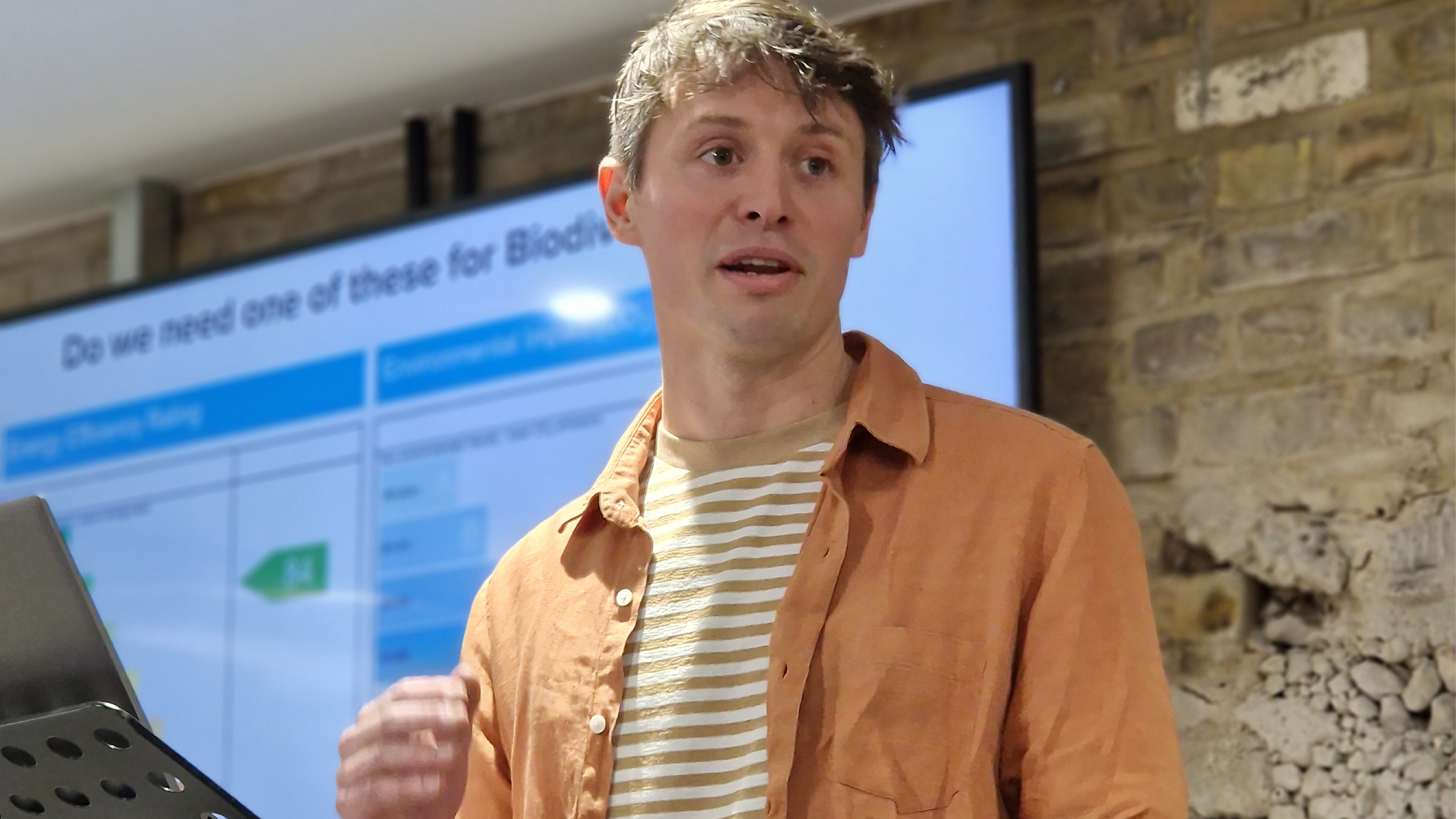PTE Conference Day: Living with nature - March 2024
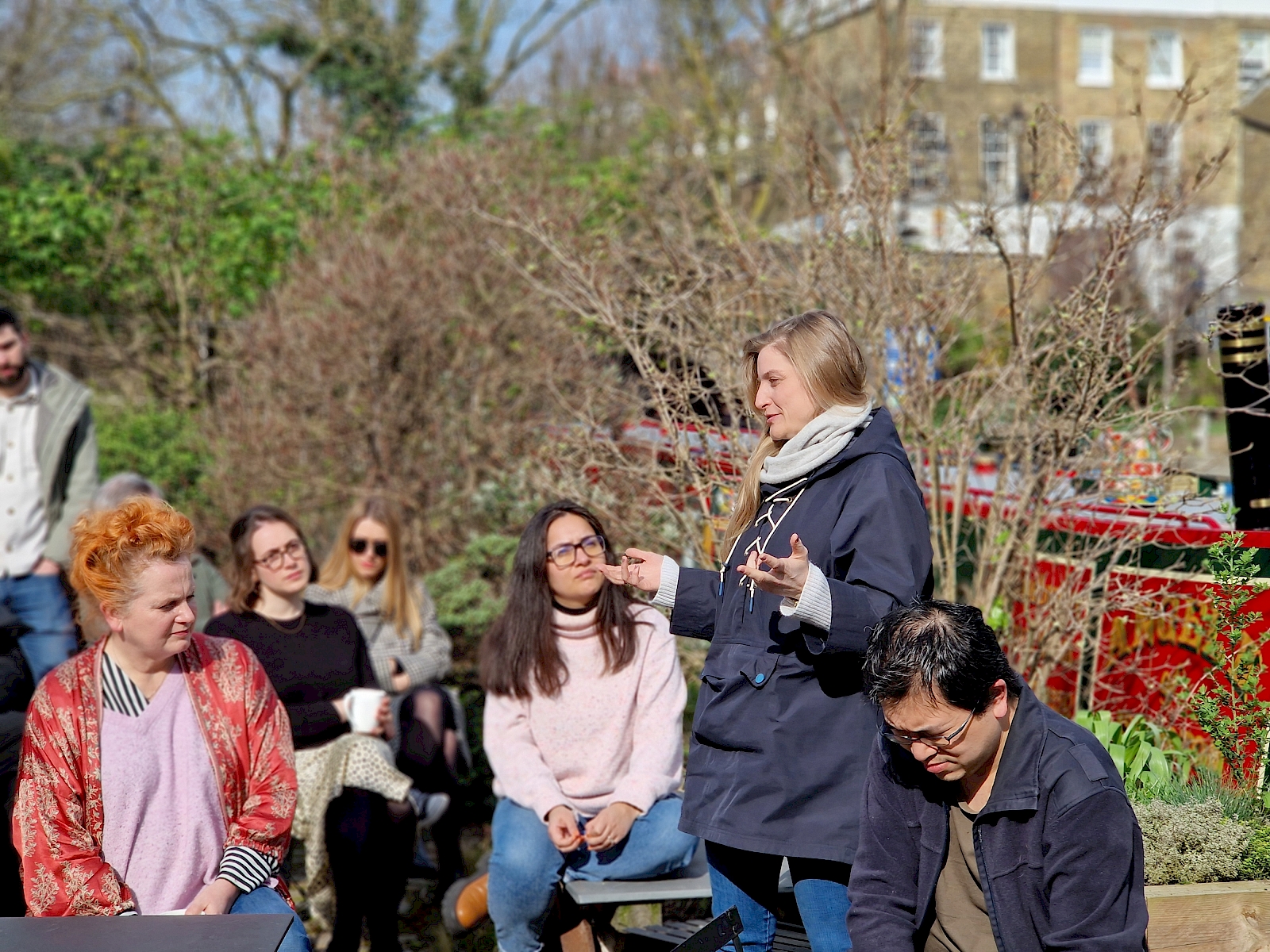
Our March conference day was all about BNG and what we can do to restore the UK’s much-depleted biodiversity
It was the first day of spring: the sun was shining, birds were singing and that feeling – of potential, new beginnings, of things beginning to take shape - was in the air. This was how our Living with Nature conference, inspired by the new Biodiversity Net Gain legislation introduced in February, began - in the garden at Diespeker Wharf, where partner Alexis Butterfield, standing at the canal’s edge, related the story of how this sylvan refuge came to be.
Alexis reminded us that much of Islington, especially near the canal, was something of a ‘twilight’ zone in the early 90s, when PTE first moved to its now long-established home. There was a lot of dereliction all around the basin and, Alexis explained, ‘clearing away the sheds that filled this courtyard to make this garden was a pioneering move.’ It changed the way others – fellow professional, clients and contractors - saw PTE: the boldness and vision is hard to deny- but it changed how local people saw this space too. For several years, Alexis, said, ‘we won the Islington in Bloom garden competition without ever entering - because our neighbours entered for us!’
Alexis then explored the knock-on effect that making the garden had, shaping our approach to new developments around the basin, including housing at Angel Waterside and Wharf Road which both provide ample canal-side gardens for their residents - and further afield too, at RIBA-award winning The Avenue in Saffron Walden, for example, which saw new homes designed around existing trees and hedgerows.
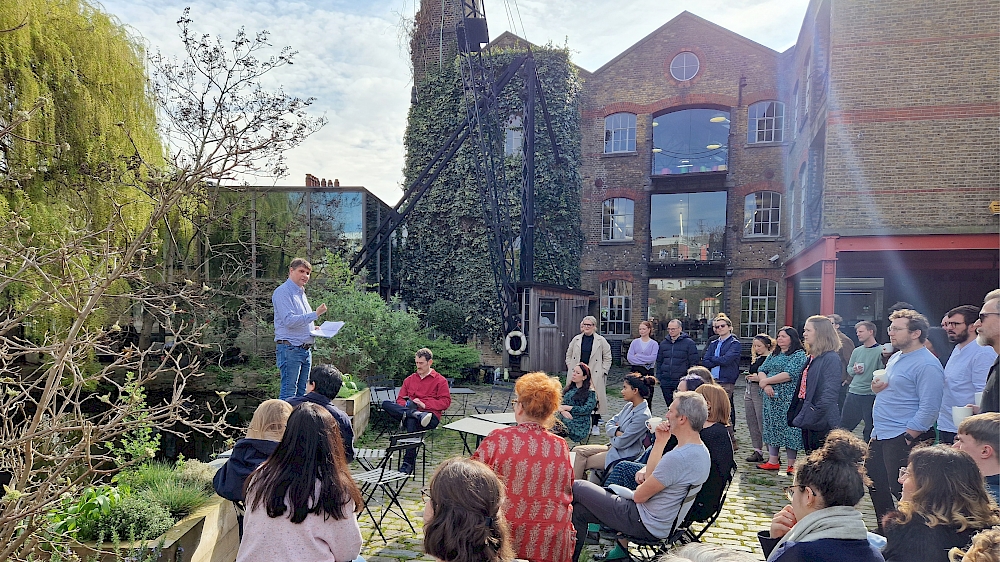
Our next session took us to the heart of this conference’s ‘matter’ – Biodiversity Net Gain. Architect Amy Burgess’ overview of the new legislation was both fascinating and memorable. We all learned something. Like, according to one measure (the biodiversity intactness index) nearly half of Britain’s biodiversity has been wiped out since the industrial revolution; how that’s more than any G7 country, more than China. In fact, we’re among the worst 10 per cent, globally. With this in mind, Amy outlined the key points every architect should know regarding BNG; essentially: a 10 per cent biodiversity uplift requirement on all new major development sites – either on- or off-site – that must be managed for the next 30 years.
Amy explored what this means in terms of red-line site boundaries (they will expand!) as well as the mechanics of BNG credits (one is worth roughly 2.5 ha) which developers can buy on an open market. We also heard about the new eco-system of professionals that BNG will support, from ecologists (there is a shortfall of these in-demand experts who will play a pivotal role in shaping a project’s BNG commitment) to brokers (who will arrange uplift deals, on- or off-site, and the necessary stewardship structures required).
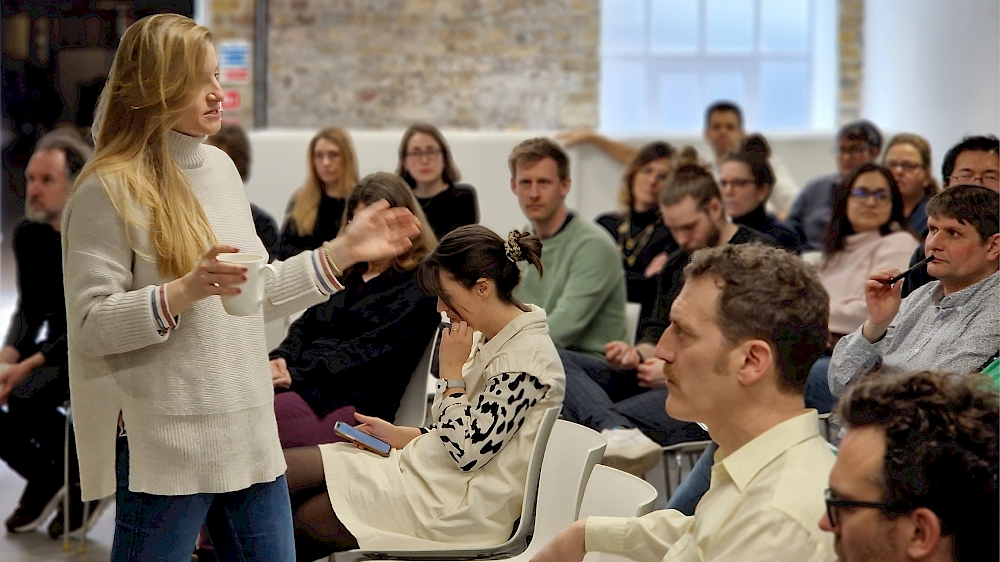
Following Amy’s talk – and her call for all of us at PTE to ask ourselves, ‘do our current designs genuinely coexist with nature?’ - Alexis, Justin Laskin then Frankie Paul and Will Gorton presented Knights Park, New Garden Quarter and Cherry Hinton: to show how we did BNG before BNG was institutionalised.
An eager debate ensued, in which our colleagues picked apart all that they’d heard, asking ‘does less dense mean less good?’; ‘Is offsite the better bet?’; ‘Who’s going to do all the looking after?’ and ‘will we see a Channel 4 doc in a few years investigating the abuse of the BNG credit system?’
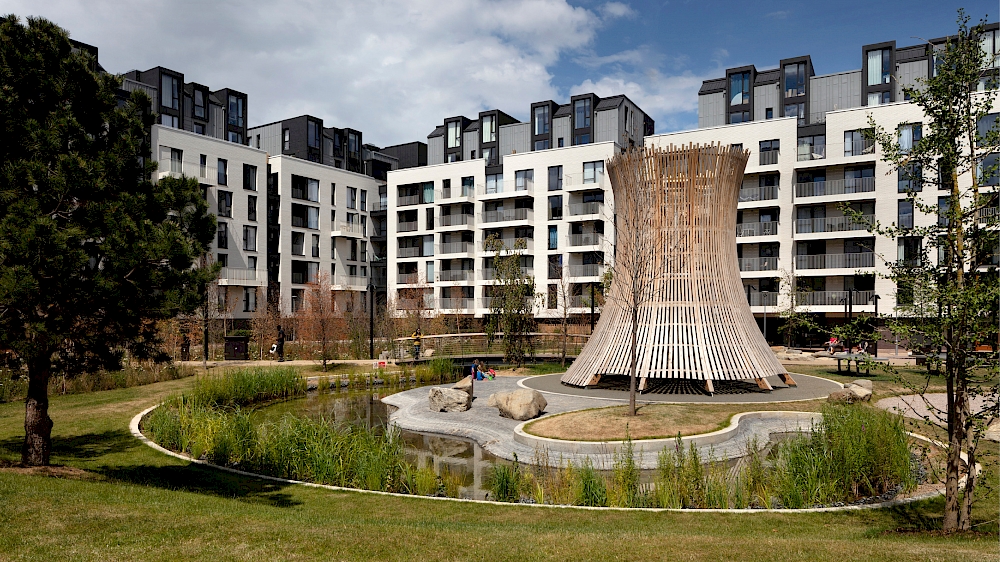
Grow your Own (Experts) – a journey towards Regenerative Practice
Focused on regenerative design, Planit’s after-lunch workshop explored net positive design, but not before an assessment of how things stand today: ‘In British architecture the bar is low,’ said Sarah Harris. Our whole mindset needs to change explained Ben Webb, ‘we need to move away from our anthropocentric perspective to one of interconnection.’
The exercise which followed involved splitting into 5 groups. Each group was given a diagram showing the ‘Trajectory of Ecological Design’, which charts the steps from ‘degenerating systems’ (conventional projects doing the minimum to comply with legislation), through to ‘sustainable’, and then ‘regenerating systems’ (humans participating as nature). The task was to take a step back and reflect; where, on this scale, did our projects sit? Did they do good work and ‘reduce harm’ or did they go even further - and give back. It was an interesting viewpoint shift, where being sustainable is not the goal…but where going beyond it and being ‘regenerative’ is.
Thursday at Four
For the final session, the Thursday at Four debate, we gathered four experts: Rachel Patch, partner at Knight Frank; Oliver Lewis, founder of BNG app developer, Joe’s Blooms; Rosie Whicheloe, a biodiversity net gain officer (in Sutton, but switching this month to Brent) and Ben Webb, Planit’s regenerative lead.
Rachel focused on explaining how offsite solutions can deliver real improvement – because it can be done at scale’ while dismissing concerns over greenwashing, stating that ‘natural capital is the asset class of the moment’, worth, according to the Office for National Statistics, £1.8 trillion.
Oliver, whose firm makes digital tools that aim to simplify BNG compliance, said while there was a global shift to frame ecosystems as ‘products’ – BNG essentially puts a price tag on a portion of ‘biodiverse’ land - he asked, ‘What’s the alternative? And if BNG makes people properly engage and mitigate the loss of biodiversity, what does it matter?’
Rosie spoke from experience delivering BNG for real, on forty plus sites throughout Sutton. “It’s way more complex than a green roof today” she said, and asked, ‘Do we need an EPC-style rating for biodiversity?’
Ben, fresh from his role leading the previous workshop session kept his comments short and sweet this time, suggesting one of the challenges BNG legislation poses is how we actually see ourselves: ‘We need to remember that we are nature too – BNG isn’t apart from us. And build habitats with this way of thinking in mind.’
Audience questions came thick and fast: Is London – classified as an urban forest under some UN metrics - a special case? Should we focus instead on rewilding on a massive scale, far away from human populations? How will we properly measure and monitor the success or otherwise of BNG? What are the job creation prospects? What is best way to fund maintenance? We tried to wrap up at 5pm – but the questions kept coming. Expert in the field? Then you’re going to very busy.









